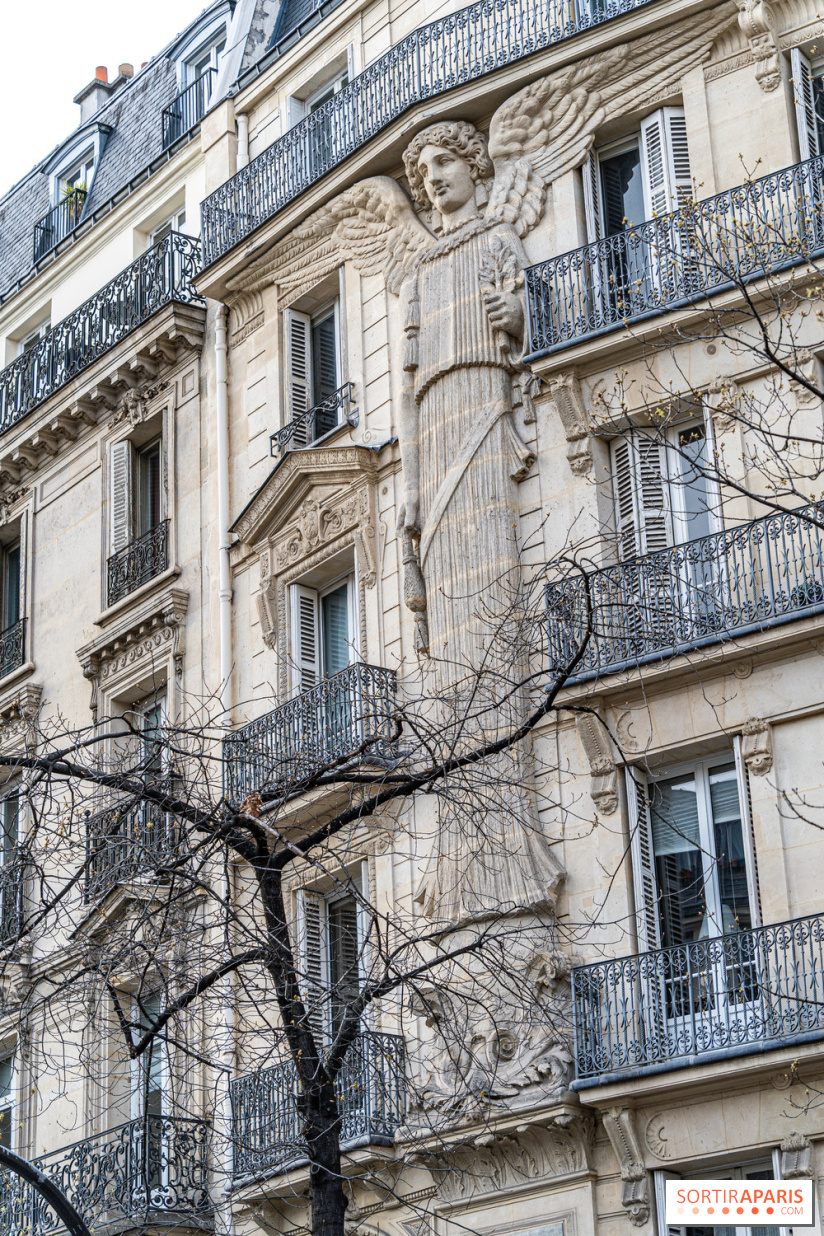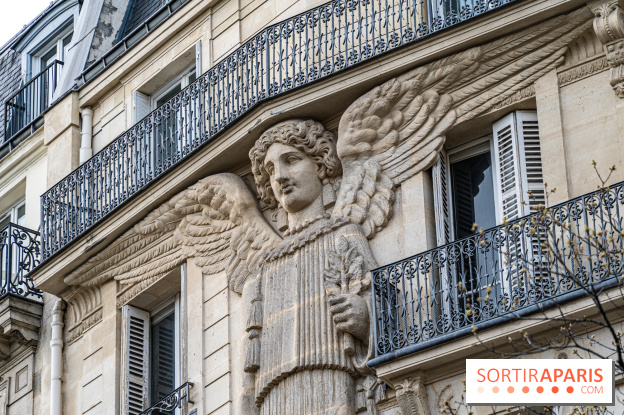The caryatid at 57 rue Turbigo is a true architectural treasure, little known to the general public. Dating from 1859, this female sculpture supporting a cornice on the façade of a building is the tallest in Paris. The work of architect Auguste Emile Delange, it remains a mystery to this day as to its origin and significance.
Caryatids are a type of statue, usually feminine, used in place of a column or pilaster, supporting a cornice or balcony on its head or with its hands. They are found in great numbers in Paris, particularly in the Grands Boulevards and Garnier Opera districts. There are over 500 of them in the capital, symbolizing values such as love, wealth and passion.
The caryatid at 57 rue Turbigo is over 3 storeys high, making it the tallest in the city. Its large wings give it the appearance of a protective angel watching over the crossroads of Arts et Métiers. Carrying a sprig of myrrh in her left hand, she could be referring to the esoteric mysteries of Eleusis, an ancient Greek myth.
As for her appellation, this caryatid has been nicknamed "the angel of the bizarre", "the genie", or "the woman with the bag" because of the small pouch she holds in her right hand. Surrealist novelist Raymond Queneau suggested that one of the building's residents had won the lottery and wished to pay homage to an angel he had seen in his dreams.
Located a stone's throw from the Musée des Arts et Métiers in Paris's 3rd arrondissement, this astonishing work of art is well worth a visit. Don't hesitate to look up to contemplate this exceptional monument and marvel at this giant caryatid that defies time and the elements.
Location
The Greatest Caryatid in Paris
57 Rue de Turbigo
75003 Paris 3
Prices
Free
Recommended age
For all























